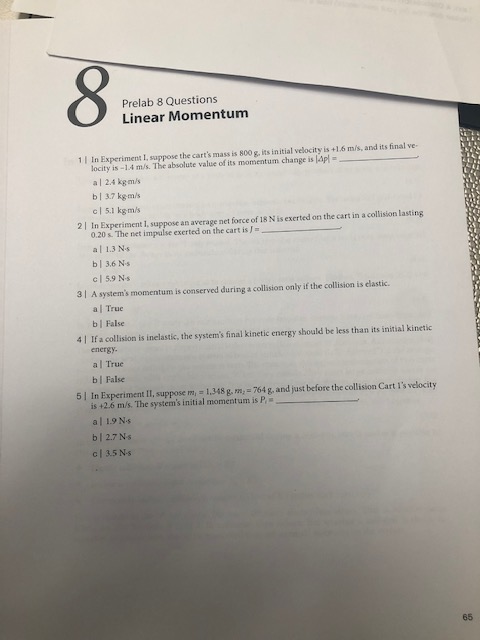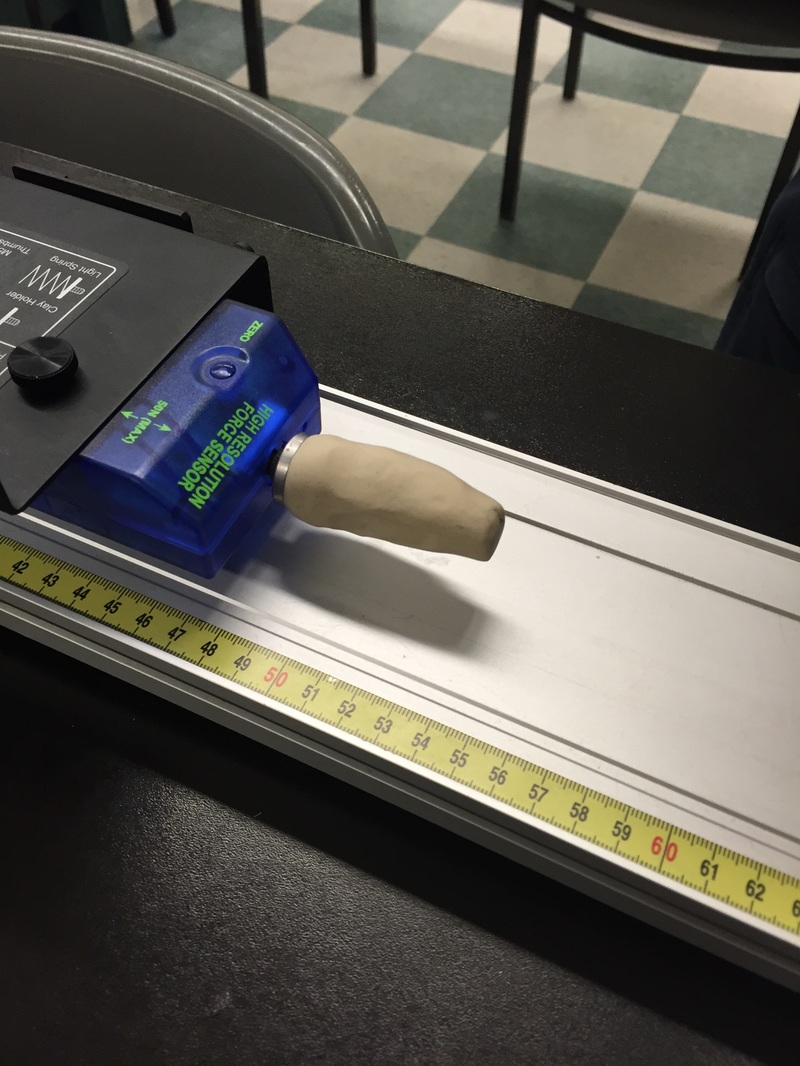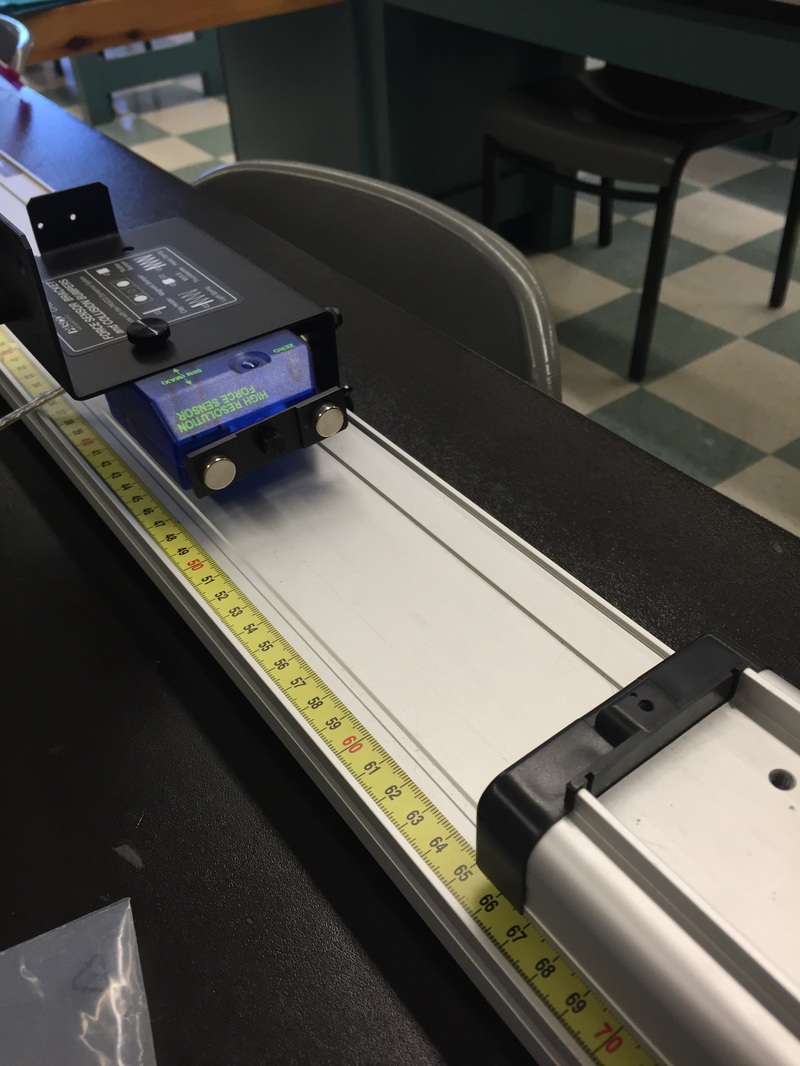

- IMPULSIVE FORCE MODEL MOMENTUM IN COLLISIONS LAB ANSWERS PRO
- IMPULSIVE FORCE MODEL MOMENTUM IN COLLISIONS LAB ANSWERS TRIAL
This website uses cookies to improve your experience while you navigate through the website. Perhaps a magnetic bumper would see a more nearly elastic collision, and yield a ratio closer to 2. We saw this as a slightly smaller speed after the impulse. That the ratio is just under 2 could be due to the fact that the “elastic” collision is losing some energy. The elastic impulse is a little less than twice the inelastic impulse. The impulse from the elastic collision was very close to twice the impulse of the inelastic collision. The impulse values determined through the velocity-change calculation and the force integral were consistent. The impulse is found using the integral of the force vs. The change in momentum was calculated from the mass of the cart and the change in velocity.

When we analyzed the data over the five runs, we obtained the following results.
IMPULSIVE FORCE MODEL MOMENTUM IN COLLISIONS LAB ANSWERS PRO
As a result, when we used the Logger Pro integral tool, we selected the region from the beginning of the collision until the force returned to zero and the cart had come to a complete stop. We felt that clay was a good choice, however, the bottom graph shows us that the cart is bouncing back very slightly. The difficulty in performing this experiment is using materials that produce an inelastic collision. The inelastic collision (the graph on the bottom) displayed some interesting results. The elastic collision shows a longer interaction time and a smaller maximum force. The scaling of the graphs is the same so that you can see the difference in the collisions. The following graphs show a comparison of the impulse from two runs-one elastic and the other inelastic. When the cart collided on the other end, it stuck to the clay. We then launched it by pulling it back the same amount. We also put a small piece of clay on the front of the cart. To collect data during an inelastic collision, we replaced the hoop bumper with a piece of clay rolled into a cone. We used the integral feature of Logger Pro to determine the impulse and collected five trials of data for each collision type. We set the photogate to work in the Gate mode. We used a data-collection rate of 500 samples/second and collected 10 seconds of data. When the cart was launched toward the other end, it collided and rebounded from the hoop bumper on the force sensor. We launched the cart from a consistent compression of the hoop spring. On the other end of the track we placed the track bracket from the Bumper and Launcher Kit, and we attached the other hoop spring to the bracket. We attached a photogate to the track and attached a picket fence to the cart. We attached a hoop spring from the Bumper and Launcher Kit to the force sensor and laid the force sensor in the track, butted up against the end stop. On one end of the track, we placed an end stop. We ended up using a Dual-Range Force Sensor, a Vernier Photogate, our Dynamics System, and our Bumper and Launcher Kit. We tried different combinations of equipment and different experimental setups, and came up with a nice experiment. Producing perfectly inelastic collisions can be difficult, because objects tend to bounce. For example, a cart could move along a track and collide with a spring at end of the track.

Producing an elastic collision with a low-friction cart is fairly easy since we could use magnets or springs during the collision.
IMPULSIVE FORCE MODEL MOMENTUM IN COLLISIONS LAB ANSWERS TRIAL
To compare the change in momentum between the two different types of collisions, you have to perform the experiment multiple times, and for each trial you need to have a consistent initial momentum.This is a counterintuitive concept, and performing an experiment to observe this can be a challenge.

Keith Michaelsen, Southington High School, Southington, CT, contacted us to discuss ways to show students that the impulse delivered during an elastic collision is twice the impulse delivered by an inelastic collision.


 0 kommentar(er)
0 kommentar(er)
